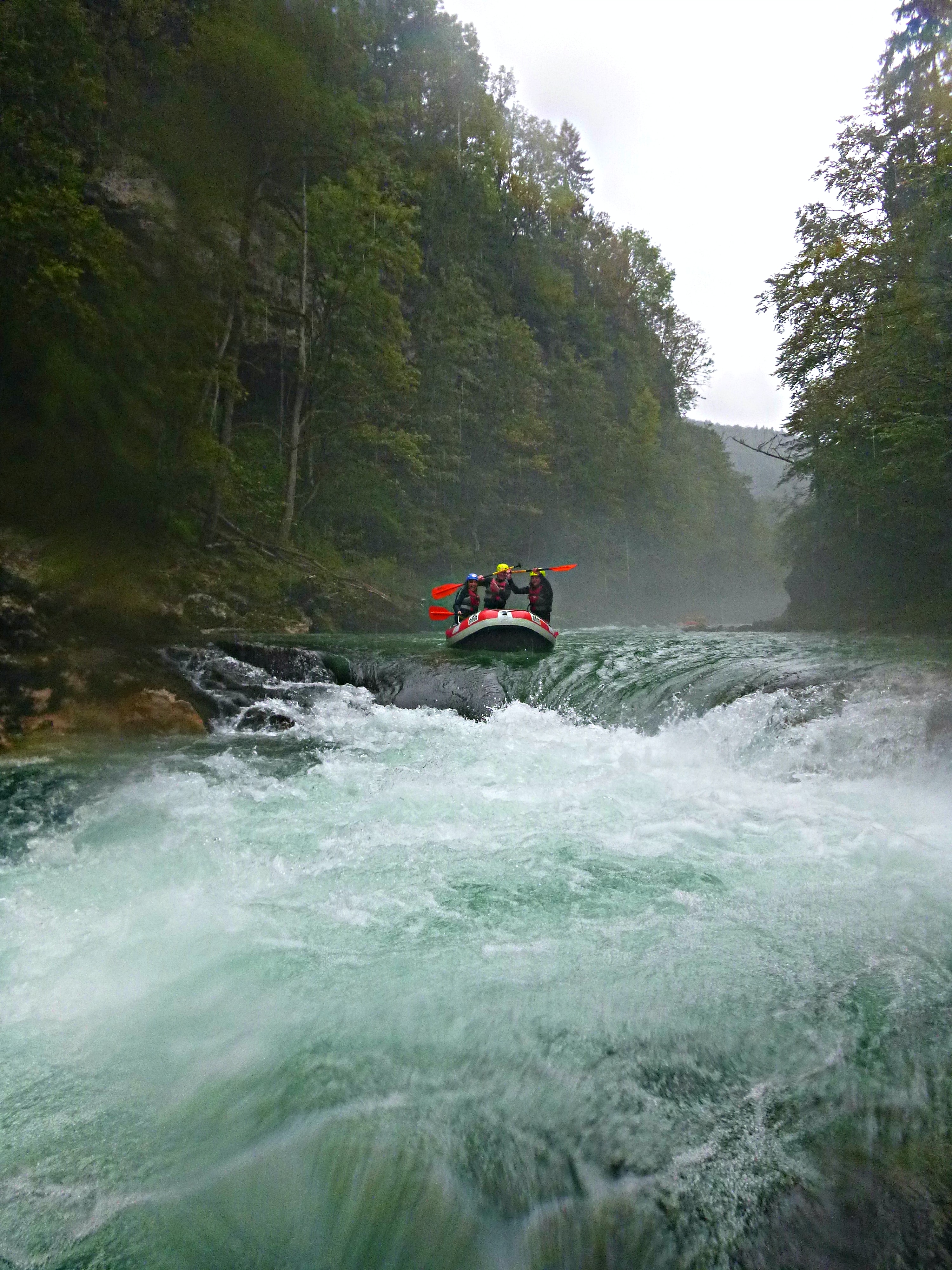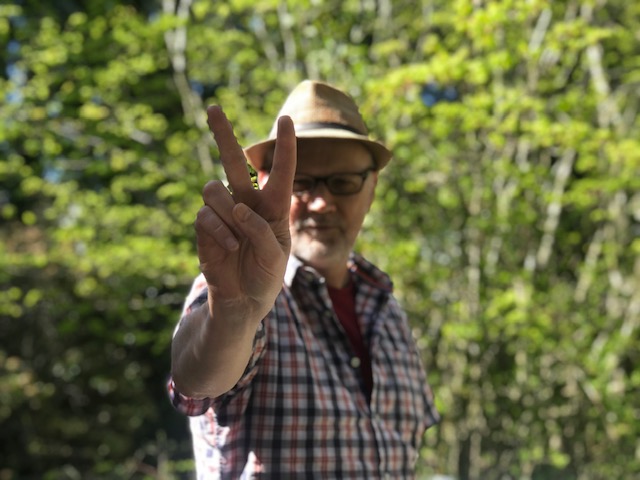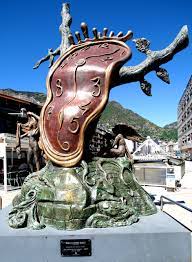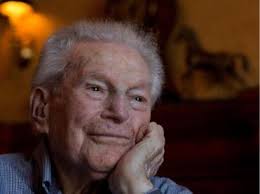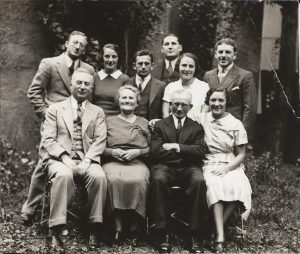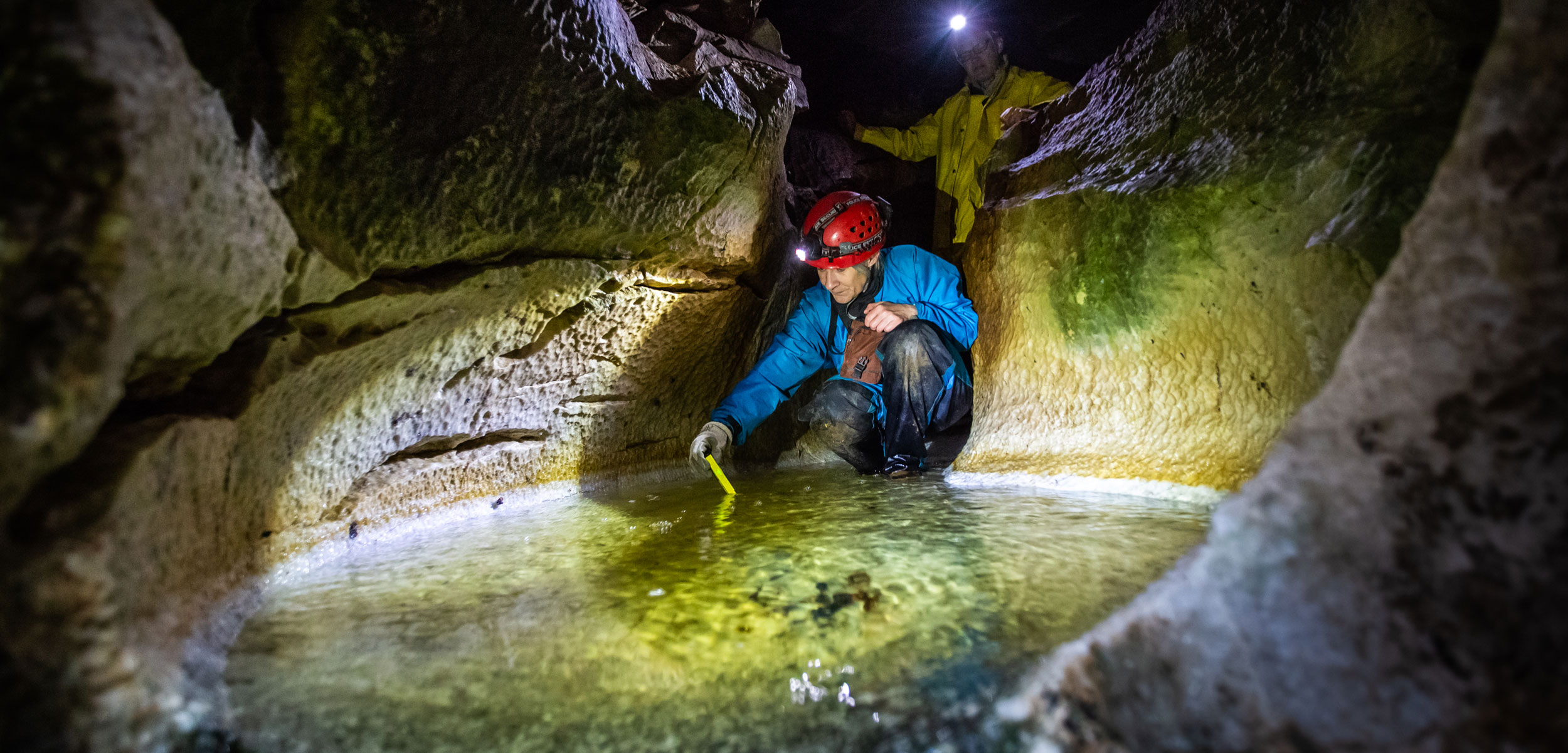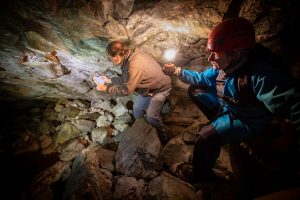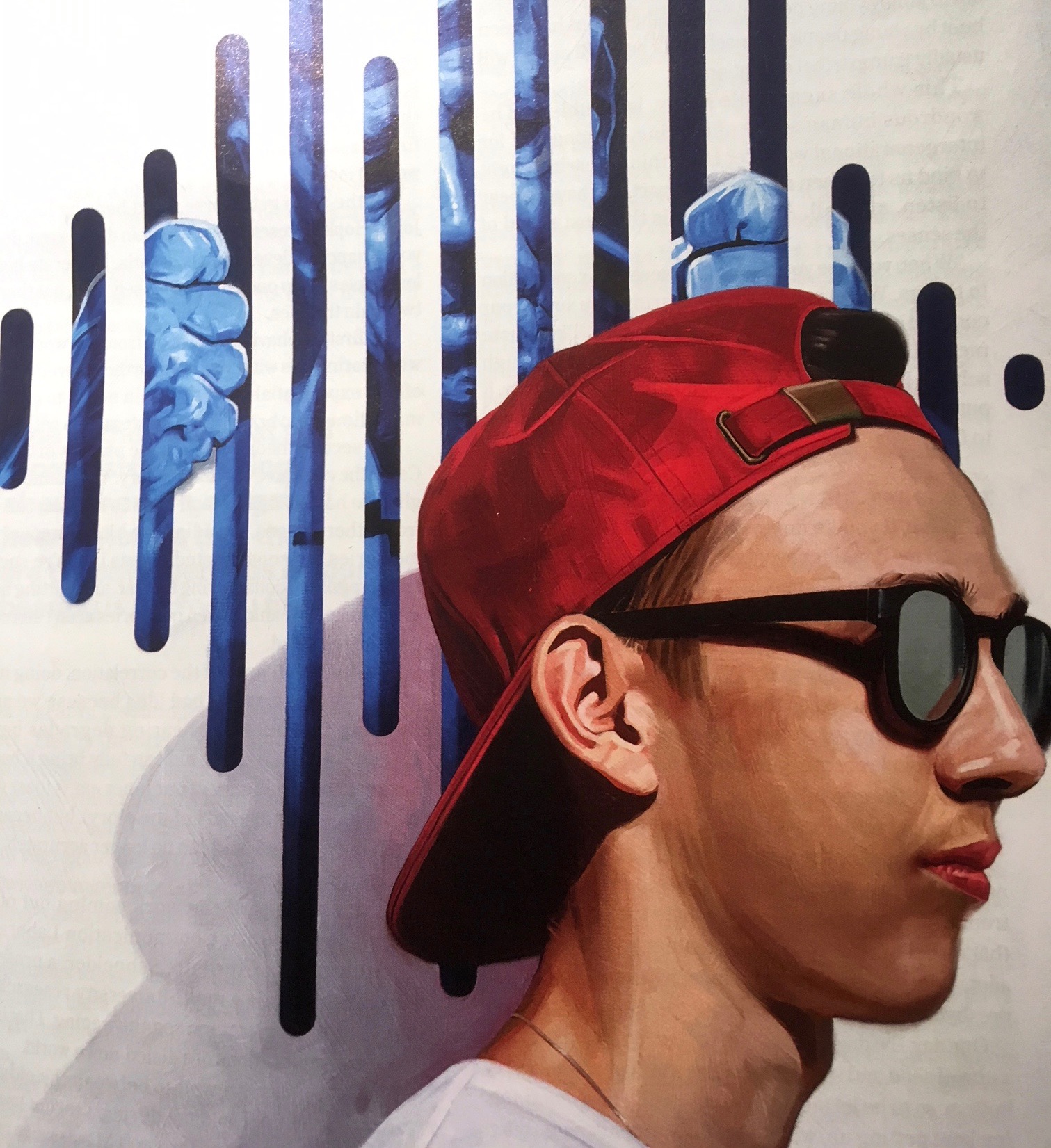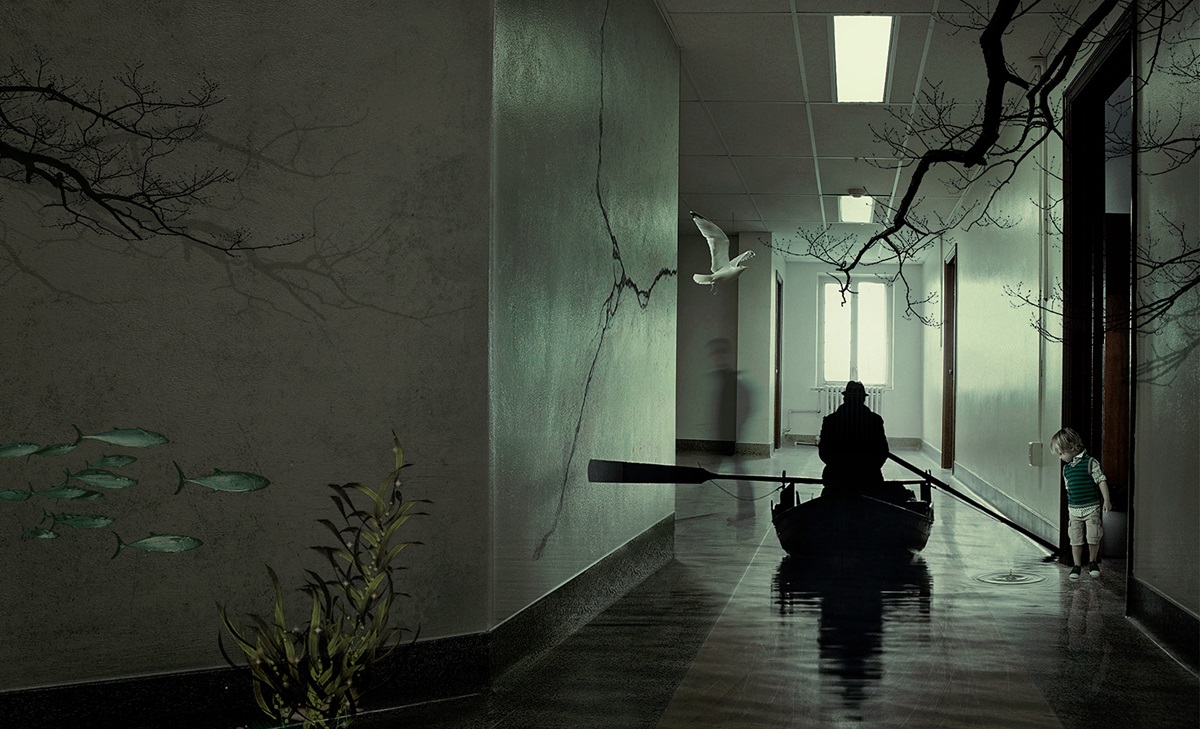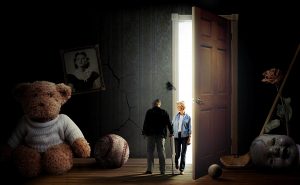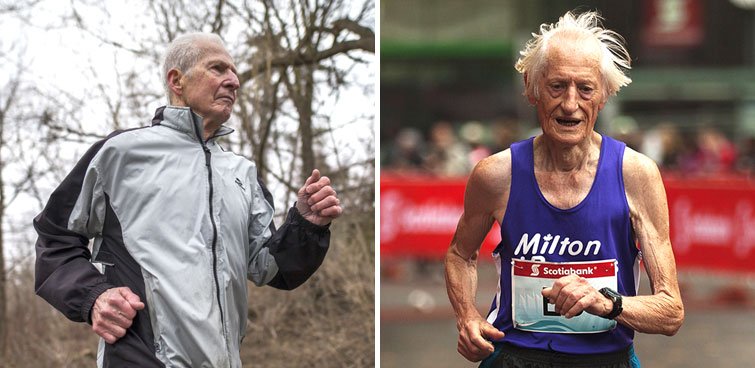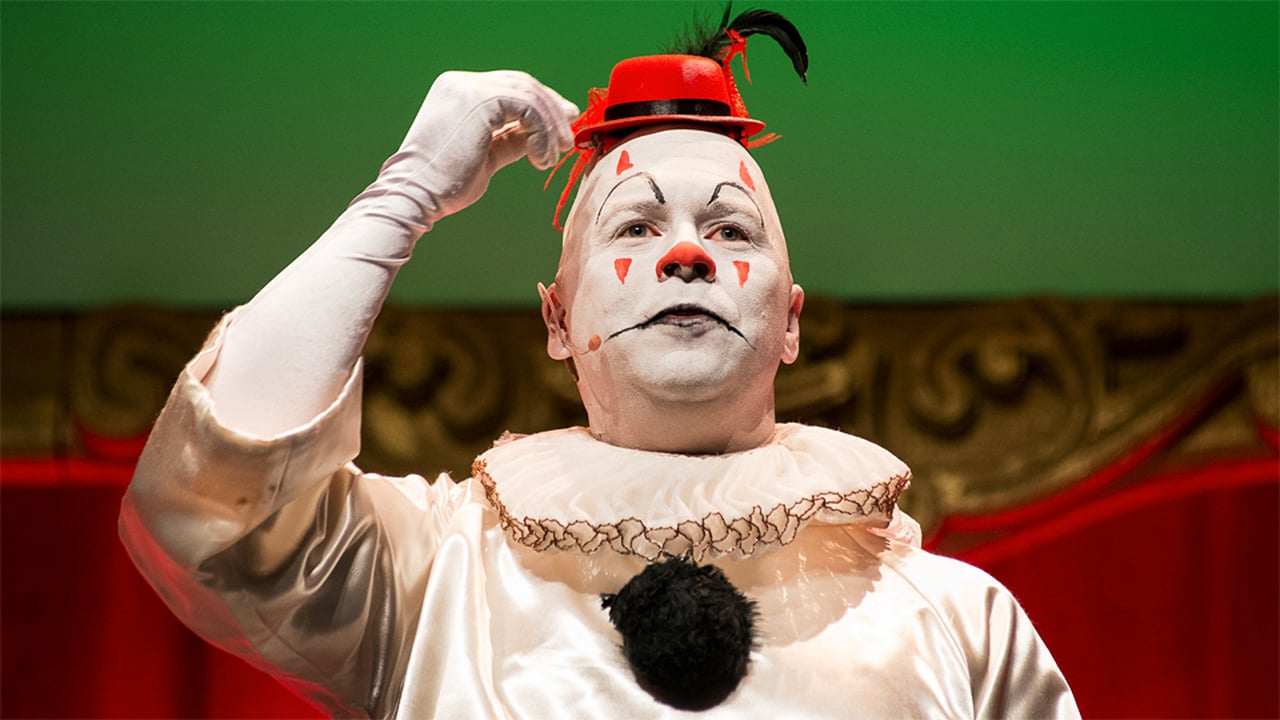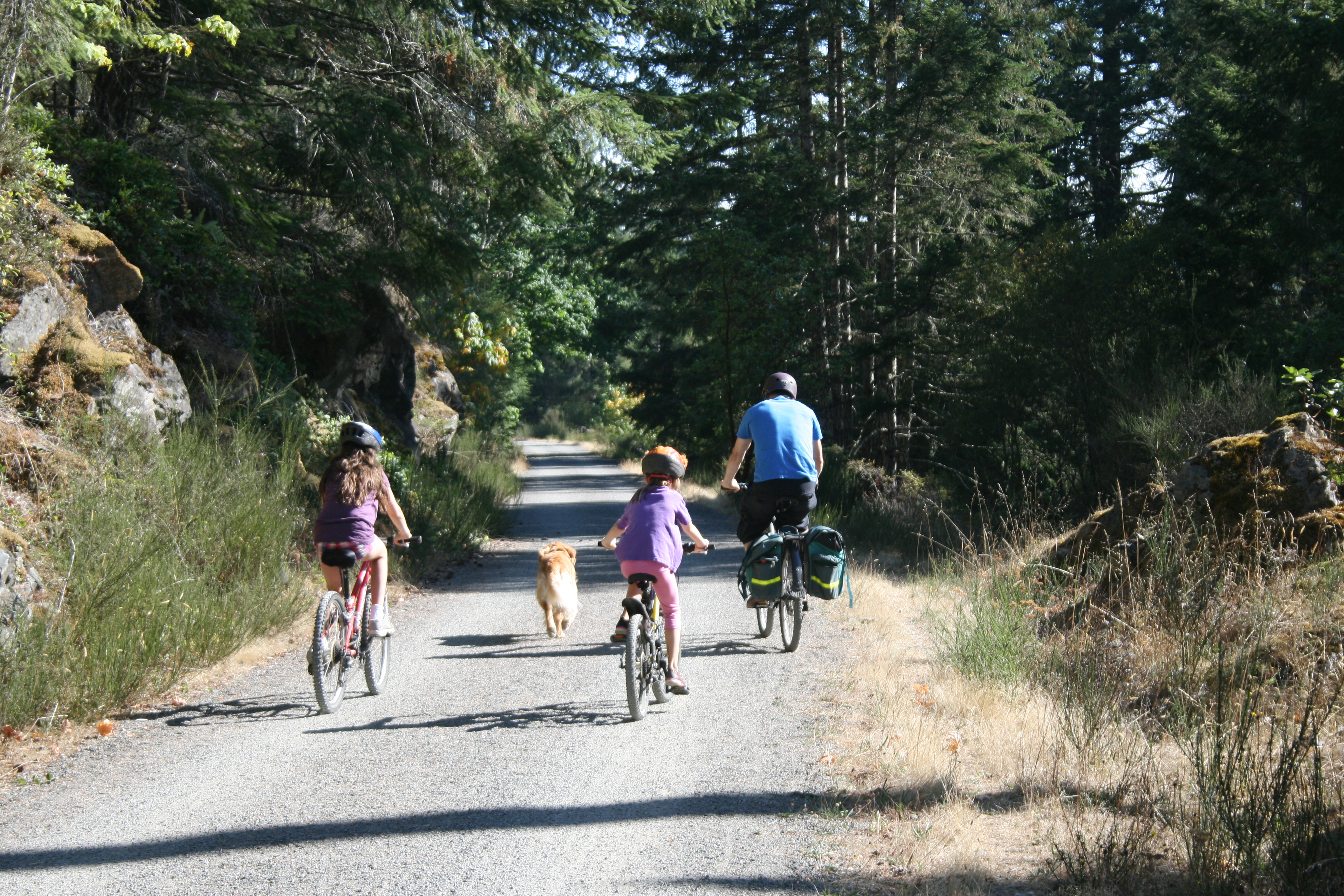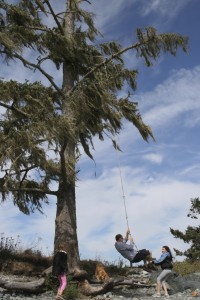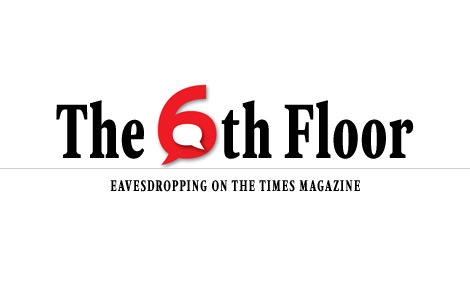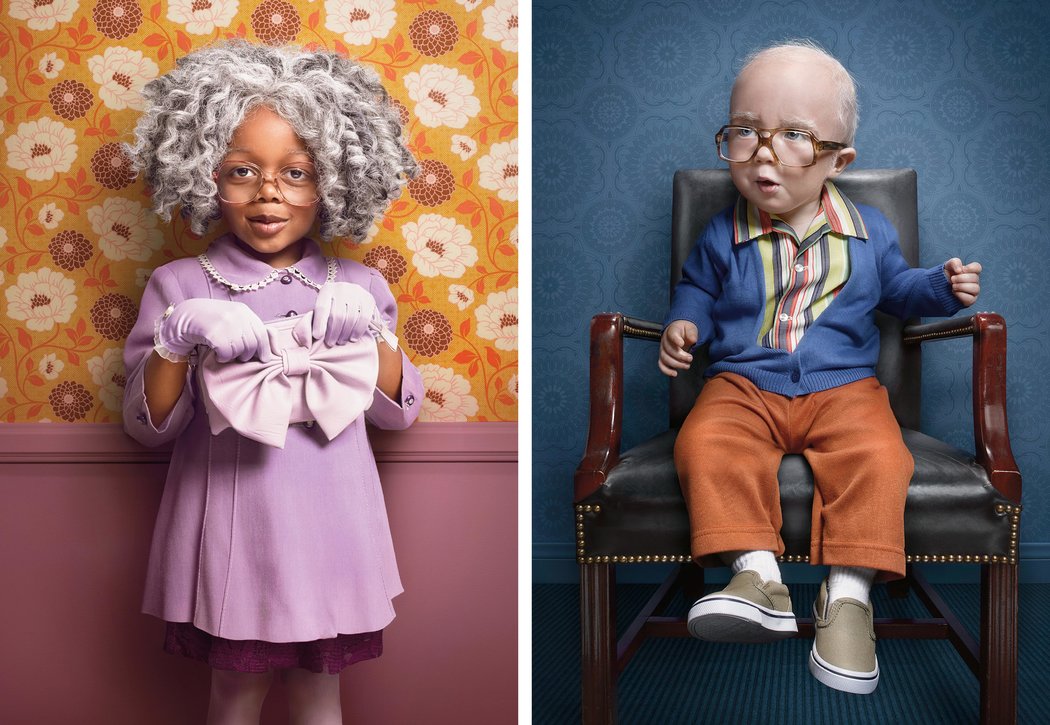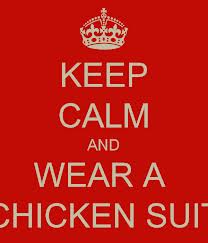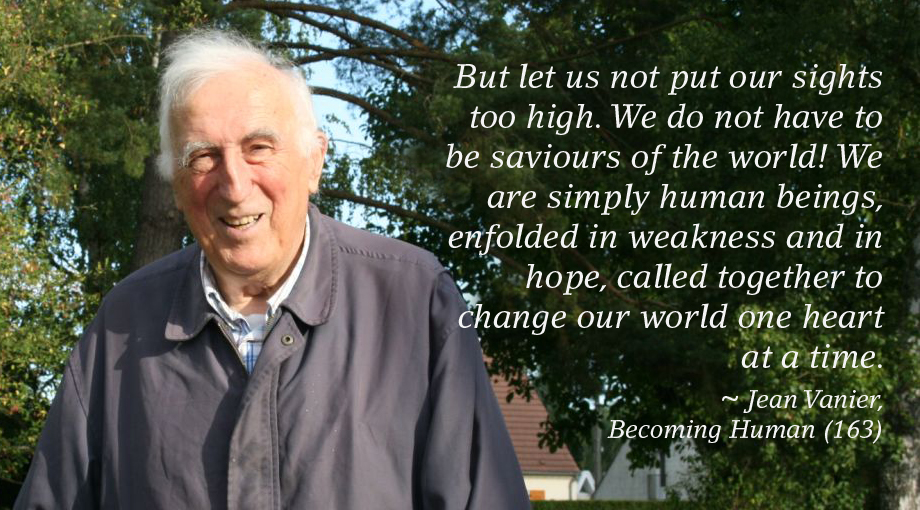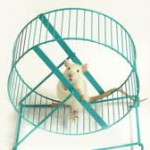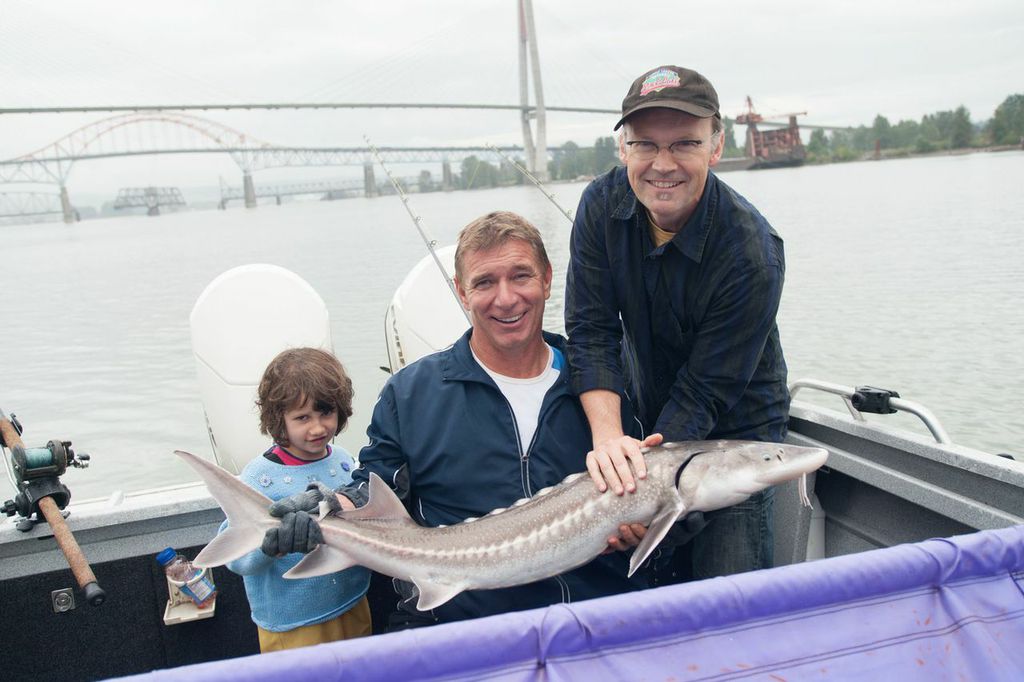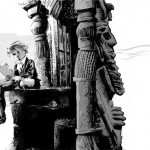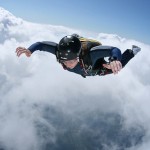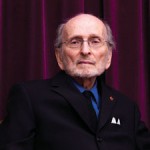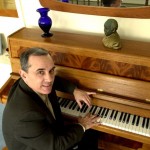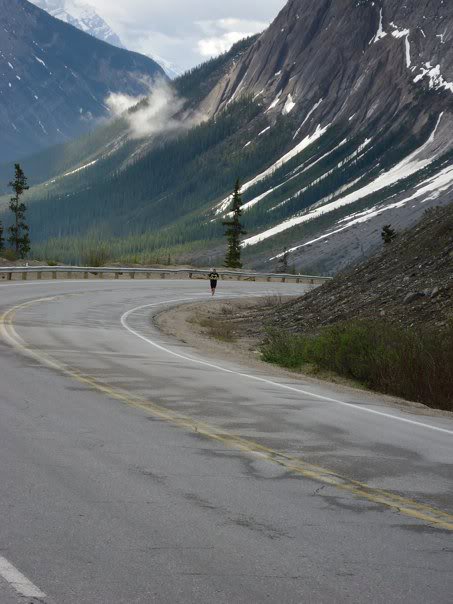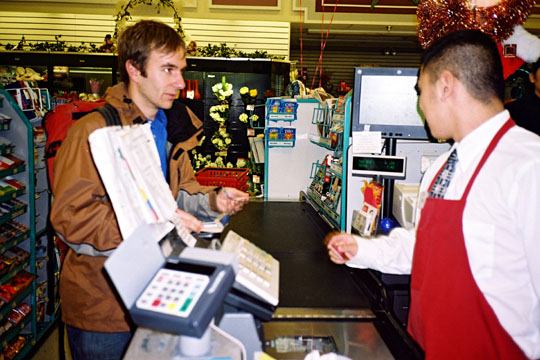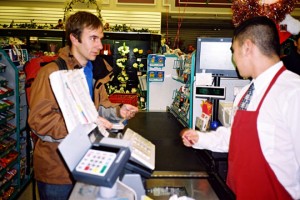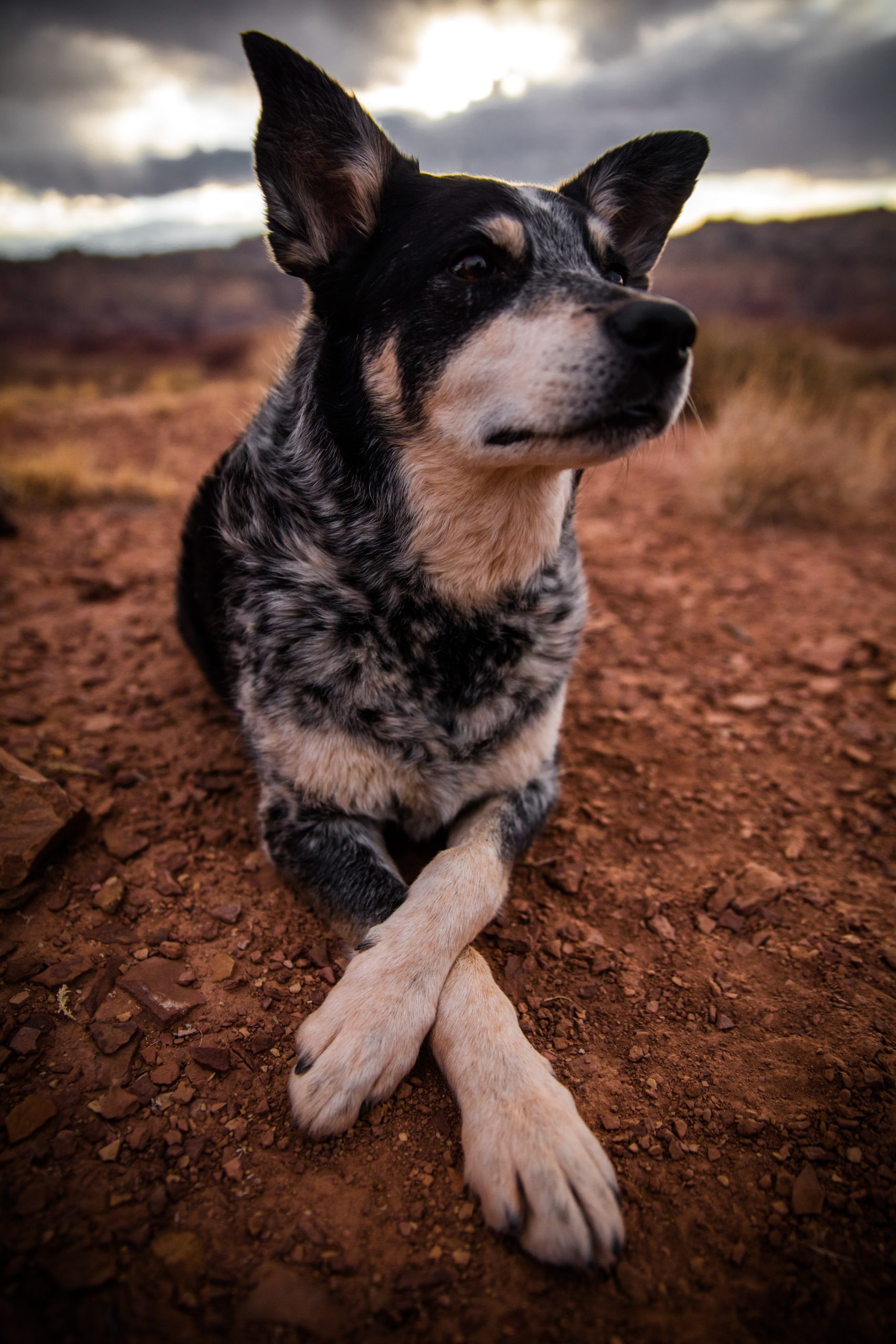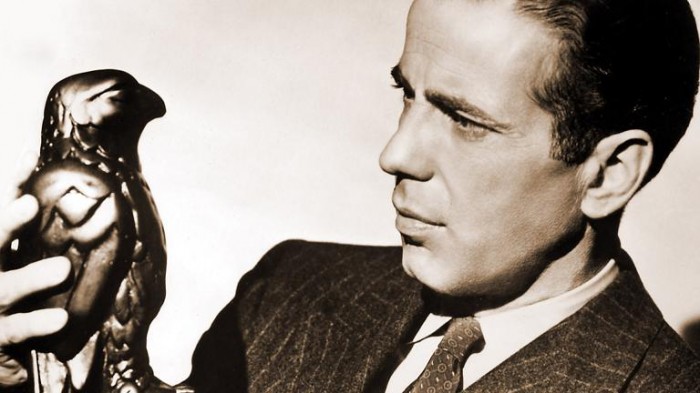It’s been said my grandfather helped build modern-day Korea. He left a subtler legacy for me
From THE WALRUS, June 2004
There was a man in the land of Han whose name was Bob; and that man was imperfect, and often wrong, though he feared God, and avoided evil. And there were born unto him six daughters and one son, who each had their own home. And Bob, each day, morning and evening, aware of the evils in the world, offered sacrifice of intercessory prayer, according to the number of them all, for he said, it may be that my children be inclined to conform to the ways of the world, when they might, by Divine Grace, be transformed by the renewing of the mind so as to prove the benefit of conforming rather to the good and acceptable and perfect will of God. Thus did Bob continually. (See Job 1:1-5)
So begins a diary that my grandfather started writing in 1898, shortly after he was sent to Korea as a medical missionary by the Presbyterian Church of Canada, and which he consolidated on onionskin and carbon paper twenty years after his return to Canada in 1936. The work provides a rare glimpse of the seaside village of Sungjin, which is now deeply ensconced in Kim Jung-il’s North and among the least accessible places on Earth. It’s a snapshot of rural medicine reduced to its basic elements: improvisation and skill and luck. It shows a committed man trying to do good in impossible circumstances.
The reference to Job, even the Korean word han (which translates very roughly as a kind of deep national sadness, infused with outrage at injustices done), suggests we are in for a tale of Christian self-sacrifice, with or without a tidy redemptive wrap-up. My grandfather’s reward was, I suppose, posthumous. There are today more than ten million Protestant Christians in South Korea, at least a quarter of the population. Christianity rivals Buddhism as the religion of choice. The Presbyterian mission to Korea — an effort involving, in its second wave, the Canadian, American, and Australian wings of the church — has been called a “miracle of mission history.” If it were a corporation, it would no doubt be looked at by Harvard Business School graduates as a study in how to build a franchise.
Presbyterian evangelists displayed, from very early on, a cunning sense of which notes to sound with the Korean people. They managed to make Christianity seem less like a threatening replacement of traditional Korean beliefs than a natural extension of the brand. They appealed to nationalistic pride, evoked family values, and, most important, promised a paradise — an economic one — to be realized within a single lifetime.
It’s not too big a stretch to say that my grandfather helped build modern-day Korea. The Protestant ethic helped to power the country’s transformation into an emerging titan of consumer capitalism. What was initiated back at the turn of the century would grow into a uniquely Korean expression of Protestantism. The pastor of the world’s largest church — the half-million-strong Yoido Full Gospel Church in Seoul — summed it up in a phrase: the “theology of prosperity.”
And so those early pioneers have in some circles been canonized. They are the grist of propaganda, of religious scholarship, even of the kind of “personal-development” books that fly off the business shelves. But not, usually, of literature.
This becomes my problem, now. It is considered professionally advantageous for a writer to come from a long line of abusers or psychotics or slaves to some pernicious addiction. When the sun sets on such people (as the novelist Geoffrey Wolff said of his own deadbeat dad), “one clambers up a slippery mountain, carrying the balls of another in a bloody sack, and whether to eat them or worship them or bury them decently is never cleanly decided.” It’s not quite clear what ought to be done with Robert Grierson, M.D. He remains, at least in the family mythology, almost beyond reproach: to eat him would be indecent; to bury him, premature; to worship him, banal. Worse, I have no memory of the man. He died in 1964, when I was two, and the living links to him are closing down fast.
But one way to think of him is as part of a continuum that began with his father and ends, at least for now, with me, as a kind of conversation, with each man responding to his father by creating a life that, to varying extents, agrees with his or rebuts it. This is, I think, how our identities are formed — by a push and a pull.
My grandfather was ninety-five years old when I was born. “Now I can die in peace, thank God!” he told my mother. “The family name will carry on!” It wasn’t just the name he was talking about — it was the spiritual obligation. If he could check back today, forty-one years later, for a progress report, it would not be immediately clear to him whether his prophecy had been borne out. The evangelical impulse did not show up in my father or in me in any obvious way. It seems to have been transformed en route, to have shed a little of its energy — and ultimately to have found expression in things that have nothing to do with institutionalized religion. My grandfather would be miffed. Or maybe he wouldn’t. Because God-fearing Bob seems himself to have struggled to define what it meant to be a Christian.
Anyone looking for a place to spend twenty-five years in exile could do a lot worse than Sungjin. A town of a few thousand, according to my grandfather’s accounts, it lies hammocked between ocean and rock: what was then called the Sea of Japan (now the East Sea) touches its feet, and the Diamond Mountains at its flank shorten the afternoon sunshine.
The Sungjin hospital, where my grandfather carried out one half of his mission in Korea, resembled a sort of peace-time M*A*S*H unit. “Outside the brain cavity,” my grandfather wrote, “there was practically no operation that we did not do from the eyebrows down.”
They resected ribs, removed kidneys, excised carbuncles, even did plastic surgery. For one syphilitic woman whose top lip had sloughed off, leaving “nothing under the nose but grinning teeth,” my grandfather fashioned a new lip from neck tissue and sent her home to her village, quite beautiful now, he thought. He did cataract operations by candlelight, removed ovarian cysts the size of wheelbarrow tires.
There were always more patients than he, stretched thin by his other commitments, could handle. The evangelical work often got in the way of the doctoring.
The position of the Presbyterian Church until that time was that medical missionaries like my grandfather were chiefly valued not for their medical skills but for the access they had to the unconverted. (“You’ll come for the appendectomy, you’ll stay for the epiphany!” their sell-line might have been.) They were Trojan horses, really — a way to build trust and get inside the gates, thence to deploy the Christian gospel. Here’s how the Korean Mission Field newsletter described the strategy: “The doctor could go where the preacher’s way was closed, the relieved sufferer would listen to the message of his physician where he would have only scoffed at the strange doctrine of another.”
But a counter-current was forming, a philosophical shift from a strictly evangelical mode, which held that Christian conversion could solve society’s ills, to a more inclusive social-gospel approach. If you were a doctor in Korea in that transition period, were you promoting conversions or providing social service?
This was to be my grandfather’s first great test.
Bob Grierson was a tiny man, five foot three and never more than 110 pounds. He was legendarily robust, a genetic inheritance. He did tricky calisthenics and strength-work most mornings until well into his nineties. These routines he transplanted to Korea. There are photos from Sungjin of villagers dotted across the exercise yard — anticipating scenes that would become familiar seventy-five years later, with Hyundai employees out exercising en masse on the company’s emerald lawns — comically knotted up in groups of two or three. They hold each other off the ground in crazy isometric friezes. It’s painful even to look at.
Life, to him, seemed to be organized in resistance to Thomas Aquinas’s definition of acedia: “the capital sin of boredom or sloth or ennui at living.” He would often read while walking, a habit that could send him veering off the path. Koreans who heard him speak their language did a double take, because he spoke it without an accent. Before leaving for the mission field, he became a small footnote in Canadian sports history. James Naismith famously invented basketball; but my grandfather (so the family story goes) brought the game to Canada after seeing Naismith’s peach buckets and stepladders at a ymca in Massachusetts.
He was, in Isaiah Berlin’s famous paradigm, a fox, not a hedgehog. He knew a lot of little things. In Sungjin, he put together an orchestra that at various points included a trumpet, cornet, sax, violin, clarinet, trombone, violoncello, bass drum, and kettledrum. They took their act to the north country, playing for church openings, conventions, revival meetings. Travelling through Siberia at the beginning of his last furlough (sabbatical), they belted out hymns in four-part harmony, like some sort of Presbyterian Partridge Family. (“I have the feeling that in no other of my varied services to the cause of the Lord and saviour did I serve him more usefully than as the Minister of Music,” he would say.)
Whether from some powerful sense of civic engagement, or just because he wanted to show off his chops, my grandfather entered the Canadian national-anthem competition. His entry was nosed out by Ewing Buchan’s “O Canada” in 1909, but I can remember my dad singing my grandfather’s entry around the house, in this way keeping it alive.
His version, which was called “My Canada,” had a few nice moves, and, hearteningly, it kicked against the Calvinist idea of predestination.
Here men are men with good red blood,
Here maids are fair and true.
Here sturdy worth not pride of birth
Determines who is who.
But it probably hit the God note a bit hard for what was supposed to be a secular anthem. It wouldn’t have sounded right at hockey games:
Tho from abroad came vice and fraud,
They cannot flourish long
In Canada, my Canada,
All that is modern and right up to date,
Yet the old Ten Commandments remain on the slate.
My grandfather was decisive. His first date with my grandmother, his second wife, was a game of chess aboard a train en route to Seoul in 1922. They’d met minutes before. Within a couple of months, they were married. And my father was conceived, if not on their wedding night, then awfully close to it. I’m sure my grandfather was bowled over by my grandmother’s wit — there’s every reason to believe she thumped him at chess; she was a formidable player — but there were practical considerations for this pairing, too. His first wife, Lena, had just died, tragically, in childbirth (losing the baby as well). Back home in Sungjin there awaited a motherless household of four daughters between the ages of eight and twenty-one. He needed a new wife, and fast.
But, perhaps most of all, my grandfather was a storyteller. His Korean journals are broken into “episodes,” parables, really, with names like “The Blind Saloon Keeper,” “The Bread-and-Butter Man,” “The Hour of Decision,” and “The Valley of Humiliation,” in which Reverend Bob gets some mild comeuppance. A good Protestant, he tried to stick to the facts, but you can tell the temptation to embellish is almost irresistible, and he torques up the drama where he can. He says things like, “Now we turn the page and see a real hand-to-hand scrap, in which your humble servant was personally engaged.”
Here is Bob dipping his drinking mug into a roadside hot spring and taking a big quaff — boasting of the healthful effects it would surely produce — only to discover, a couple of hundred metres upstream, some villagers washing a dead pig in the source water.
Here he is performing for some villagers who got wind that he had been a champion gymnast in college, and set up an iron horizontal bar for him to show his stuff.
“I managed to do one or two of my most spectacular up-starts, layouts, circles and shoots, but I did not feel well afterwards,” he admits.
His feats as a surgeon have no doubt been exaggerated over the years. But there are reliable first-hand reports. My father, as a kid, had a mole on each cheek. He remembers that, one day, my grandfather sat him down in a chair in the dining room and, by the light coming through a window, carved them out with his scalpel, leaving no trace of a scar. Years before, my father had lain patiently while my grandfather clipped out his tonsils without any anaesthetic. He looked on my grandfather with trust, and pride, and awe.
There is no firm agreement on just why Christianity grew so quickly, so prodigiously in Korea. Certainly there were political reasons. Modern Korean history is one long litany of continual threat or oppression or occupation: by China, Russia, Japan. Starting in about 1905, under Emperor Meiji, Japan began tightening the screws on Korea. Reneging on its promise to grant Korean independence, it began a feverish political smear campaign, belittling Koreans as a primitive people incapable of self-government. In 1910, Japan annexed Korea outright.
Korea, in response, turned inward. As a matter of pride, and self-survival, it began bolstering its own culture in contra-distinction to the Japanese. Athletic contests were organized (Korean prowess in distance-running dates back to those years) and schools sprang up. Korean intellectuals recognized that alliances with Christian missionaries — internationals — were essential to counter Japanese propaganda. The missionaries and the Koreans needed each other.
But the magnetic persuasion of the early missionaries was also a factor. (“When I first came to church I did not believe in Jesus Christ, I believed in Koo Moksa,” reported one Korean Presbyterian church elder. Koo Moksa was my grandfather: literally, “Minister Grierson.”)
Because Robert Grierson was the first Canadian medical missionary to Korea, one might be tempted to compare him with Norman Bethune. But when I read his journals, I thought of Che Guevara and his motorcycle diaries.
A missionary on a motorbike is a benign revolutionary, for sure. My grandfather bought his in 1919 while on furlough in the Hollywood Hills. It had a sidecar, and when my grand-father saw it at a dealer he imagined it back in Sungjin, ferrying patients the hard mile between the mission station and the hospital. His three daughters and wife piled into the sidecar and they motored out of the lot, my grandfather touching his cap, Henry Miller-like.
It turns out that my grandfather was indeed something of a radical. And that radicalism — as is so often the case — was born of close contact with people who were suffering unnecessarily. He believed the physical needs of the rural Koreans for medical treatment superseded even their spiritual needs. In 1912, he announced he was going to do only medical work. In 1931, he left the mission field for good. Three years later, another physician-missionary crystallized his views in a mission-field newsletter: “Any society or church that uses its medical work chiefly for its own propagation is far from being Christian in the true sense and deserves only to fail in its ultimate aim.”
The longer my grandfather spent in Korea, the deeper grew his empathy for the han of the Korean people. The atrocities committed against Koreans by Japanese soldiers during my grandfather’s time in the country would later be rivalled by those of the Nazis. During the independence movement of 1919, anyone suspected of aiding the resistance was jailed or executed. Dozens, even hundreds, of people at a time were incinerated in locked barns. Japanese soldiers made “comfort women” — sex slaves — of Korean women who had been torn from their families.
As the underground Korean independence movement crested, my grandfather got politically involved in the most reasonable way he could: he allowed activists to hold meetings in his home. There were Sundays when almost no one was in church because most of the congregation had been tossed in jail by the Japanese. On those days, “to encourage the hearts of our brethren in prison,” my grandfather went out to the bell tower, where a big bell hung. “I rang it long and loud so that the person across the river might know that we were signalling our sympathy and greetings.”
Of course these people were in a fix that my grandfather had, to some degree, engineered. By declaring themselves Christians, or even consorting with Christians, they had effectively run afoul of the state. Presbyterian Christianity was, after all, about putting the rule of men and the rule of God before the rule of any emperor.
Did he feel guilt about any of this? There’s no evidence that he did. The blame, in his mind, lay not with the Christian church but with the Japanese themselves. “No wonder that Divine Providence reproved Japan for cruelty and injustice,” he wrote. “Manei [hurrah] for Korea!”
I often wonder how my grandfather held in his mind the paradox that he was both a man of faith and a man of science. Some would say the two rest on irreconcilable sets of assumptions. On the metaphorical desk of a scientist there are three in-baskets: “matter,” “antimatter,” and “doesn’t matter.” There is no room for a spirit realm.
But my grandfather seems to have taken no great pains to sort out what was the work of science (man), and what was the work of faith (God). For him, the two were intertwined.
He began and ended all medical work with a prayer. He was of the opinion that both prayer (what Buddhists might call “right thought”) and selflessness (“right action”) were manifestly rewarded. Only once in his life, from the time he was a boy earning $2.50 a week in Halifax, did he fail to tithe. His position was never that he couldn’t afford to tithe; it was that he couldn’t afford not to. He had a theory about how spiritual accounting works: the more you give, the more God gives back.
Once, he bought some useless, non-arable land from a cash-strapped friend as a favour. A few years later, the railroad came in from the south and for the rights to tunnel under a hill in the corner of his field, my grandfather was paid ten times what he’d paid for the whole chunk. “You see,” he would write, “the Lord is Himself a good businessman. He helps the tither so that the tithe may keep increasing.”
Another time, a fellow missionary wrote him a “you-can’t-get-good-help” letter, bemoaning the difficulty of recruiting missionaries. “Where are the Frasers and the Livingstones in our colleges, that we cannot get men to come out to help us?” the man wrote. He was referring to those two famous missionaries to Africa, Donald Fraser and David Livingstone. But my grandfather was startled. He had just managed, while on furlough and unbeknownst to the letter-writer, to recruit two men, by the names of Fraser and Livingstone.
He was pretty clear on what to make of such “coincidences.” They were proof of the existence of God — not in the scientific sense, of course; rather they were what theologians call “pragmatic proof.” The logic goes like this: strictly speaking, it’s impossible to make a theoretical argument establishing that Christianity is the universal religion, or that Christ is the Son of God. (Such propositions are “unfalsifiable,” and therefore unsound science.) But Christianity’s mysterious validity — like that of the Theory of Relativity, certain Chinese herbs, and Charlie Chaplin — lies in its having withstood the test of time. “In missionary work,” the theologian Paul Tillich writes, “the potential universality of Christianity becomes evident day by day… actualized with every new success of the missionary endeavor…. It shows that Jesus… has the power to conquer the world.”
My grandfather would have agreed. He describes his communications with God as a palpable thing, as perceptibly real as a radio broadcast.
The idea of the material efficacy of prayer is a problematic one. It reduces God, as someone once said, to a “cosmic bellhop,” and not a very efficient one at that. But for my grandfather it was a simple fact. Often, he would ask the Lord to place a particular notion in the mind of someone who could help him out.
For example, while on furlough back in Ontario in 1923, he stayed for two weeks in Muskoka with Fred Moffat (the stove magnate), an acquaintance who was sympathetic to the missionary cause. One night, he wrote, “I asked the Lord to put into his mind the idea of giving me a motor car to use in my hospital work. At breakfast the next morning he said, ‘Bob, my wife has a question for you.’ She said, ‘Would you have any use for a motor car out there?’”
Cash in hand, my grandfather went to Detroit, and bought a black ragtop Model T. He baptized it “Coralynn” with a little radiator coolant, packed the kids into it and prepared for a triumphant return to Sungjin.
But en route to Korea, he realized there were was an unfordable river between Seoul and Sungjin, and no road over the mountains. How to get the car across? He asked the Lord to put it in the mind of the guy in charge of roads that it was about time the country had a bridge there, and also a road beyond. Then he continued on. He drove the Model T through Japan, charming his way out of paying duty, securing the driver’s licence he had been told was impossible to get, navigating bridges he was assured were too narrow for anything but horse carts, and arriving, finally, with the fully loaded car at the bank of the unfordable river in the Non Sung Valley to find… a bridge. And a road on the other side snaking up the mountain. The bridge still smelled of newly sawn lumber. The Japanese military had just put it there to get armaments across.
He was not so much surprised as reassured. He had been, he admitted, “so committed to driving the car home to Sungjin that my intelligence would not function. It was not what one would call faith; nor, I think, was it pure stubbornness. It just seemed to be a kind of fatalism.”
And as he drove across the span he thought of the reliable calculus of faith. “Simple,” he concluded. “Like the natural law in the spirit world.”
If you follow the bloodline on my father’s side you can see the evangelical Christian impulse slowly becoming diluted.
My great-grandfather, John Grierson (no relation to the National Film Board founder), was an evangelistic Presbyterian of such enthusiasm, he used to trudge into the deep forests of the Miramichi in New Brunswick to preach to the loggers (not an easy crowd). He made my grandfather look like a moderate. Once, in Korea, my grandfather and his father found themselves at a peacemaking dinner with some Russian soldiers the mission had run afoul of. The Russians raised their vodka glasses in toast of rapprochement, but my great-grandfather, a violent teetotaler, refused to drink. My grandfather had to convince his father to at least raise the damn glass and pretend to drink. “Peace is Christian,” my grandfather chided. “Insult is not.”
My father, in turn, was more moderate than his father. My grandmother and grandfather leaned on him to be a missionary or a medical doctor (preferably both); Dad wrestled with the idea, but ultimately rejected the pulpit for the pew.
His idea of Christian evangelism was less like a direct-mail solicitation than like a poem tacked discreetly on your own front door. You don’t go out and try to wrangle souls. You simply try to set a good example.
And so the narrative comes ‘round to me.
I am a guy living in the most secular part of the most secular city in one of the most secular countries on Earth — the buckle of Christianity’s “cold belt.” My neighbourhood in Vancouver is a place peopled by the “religious nones,” as social scientists call them — the folks who when asked by census-takers to identify their religion say “none.” They are what the journalist Jonathan Rauch calls “apatheists,” people who feel at ease with religion even if they are irreligious.
While my grandfather was in Korea, in fact, right around the time my father was born, the Presbyterian Church of Canada joined with the Methodists and Congregationalists to form the United Church of Canada — and that became my family’s denomination by default. I still go to church sometimes. It’s a tranquil and fitting place to spend an hour thinking about the right things — like being in the forest, but with fewer distractions. (A high moment for me is always the semi-regular animal-consecration service at St. Andrew’s Wesley church in Vancouver. People bring their dogs and cats and snakes and hamsters to be blessed. Hamsters have souls!)
Fundamentalists sometimes call the United Church the “great compromise,” a body trying so hard to be inclusive that it’s like some sort of pantywaist uncle, ineffectual and embarrassing everyone at the party with its efforts to stay current. But, to my mind, its inclusiveness is its boon. The United Church is a mélange of beliefs and influences and, if you dig around in it, you will find the ideas of Martin Luther King, Walter Rauschenbush and his social gospel message, even Mary Daly and her feminist theology.
Of course, once inclusiveness expands beyond a certain point, it becomes simple humanism. And once you start questioning the historical accuracy of the Scriptures — a logical eventual step — you’re into Robert Funk territory. Funk is a biblical scholar and former Harvard professor who’s also a rationalist. In his view, when you boil off what are very likely not Christ’s actual words and deeds, the Jesus that emerges is one well suited to a generation of skeptics: not the Son of God but a wise and irreverent sage and social activist who may be our rock, but is certainly not our redeemer.
My own religion, such as it is, consists in trying to find a way to believe in God without feeling as if I’m kidding myself. A way to go to church (for the singing, and the stained-glass windows, and the sense of connection with my father) without feeling like a fraud. I have faced somewhat the same dilemma my grandfather did dining with those Russian soldiers, when the vodka was placed before him and he was scissored by competing demands: to maintain an internal consistency and integrity, and yet not to offend. I think Bertrand Russell was probably right when he said that religion is mostly about fear. But pro sports are mostly about tribalism, and knowing that doesn’t make the Mariners less worth watching on a Sunday afternoon. And so I go to church. And yet — how conflicted is this? — I don’t take communion. One Christmas Eve, caught up in the moment, I did. I felt guilty, and vowed not to next time.
“So let me get this straight,” my mother said, as we filed out of the church that following year, when I abstained.
“You’re only a Christian when you feel like it?”
The faith I have settled into is strange, improvised, opportunistic. My shelves contain as many books on Buddhism as on Christianity. I send up little prayers of gratitude like dispatches from some radio-telescope in Peru, their value not in the long-shot hope that they will ever be heard, but in the discipline of creating them in the first place. I am in danger of becoming a New-Age flake. In this I am as much a product of my era as my father and grandfather were of theirs.
This, then, is the progression: An evangelist begets a doc-tor who begets a psychologist who begets a writer. Every link in the chain makes sense not only in the push-pull of the creation of identity, but in its social context. At each stage, the sphere of attention, of perceived influence, of duty, shrinks: the whole world, a village, a family, an individual. With each stage comes subjectivity and ambiguity and detachment. At each stage the resistance to a received orthodoxy increases, until there is one man standing deliberately outside any coherent belief system at all, resigned to looking for some other means of transcendence.
The river tumbles down the mountain. It slips underground, boils up, goes under again. Our deepest impulses ride our genes down the generations, but they can change form. What if writing itself is the faith I have settled on? In many ways writing and missionary evangelism are more alike than most writers would care to admit. You try to use the language more to describe than to evaluate, but you judge in the end, you do. You do constant, epic, Protestant battle with yourself at every turn, trying to decide whether to reveal wonder or to stick to verifiable facts. You penetrate your subject’s defences (if you are a journalist), win their trust, and then you do what you have to do. You sometimes misrepresent yourself as more sympathetic — or at least less unsympathetic — than you are.
Preaching is supposed to be the enemy of art. (“If you want to send a message,” goes the classic advice to would-be authors, “call Federal Express.”) But even in simply showing things “as they are,” the writer is a parablist of sorts; stories are about options and actions and consequences, and they always say, “This is how a life can be.” If you are a “writer’s writer,” a stylist above all, your belief in The Word is absolute.
The desire to invent a story or honour a god are, perhaps, the same desire. For many writers (even secular ones), mystery is preferable to no mystery — even if that mystery is consciously manufactured. I think that’s one of the reasons my grandfather’s rational mind could accommodate spirituality so readily without crashing. It’s a richer story. To accept material science as the final word is to reconcile yourself to a demystified world. No magic, just coincidences.
One day in Sungjin, my grandfather received a patient who had been “a hopeless invalid” and a burden on the family for twelve years. “On examination, we could find no trouble of any kind,” he wrote. By his own estimation, 30 percent of all medical cases were psychosomatic. So my grand-father put the man on the operating table and took out his appendix. He then attached a heavy forceps to the lower end of the appendix and stretched it until it looked “like a worm almost a foot long.”
“When he awakened from the ether,” my grandfather wrote, “I took the ‘worm’ to his bedside and said, “Look at this, Chun Sepi, what we found with its mouth fastened to your bowel, drawing strength from your system. Is it any wonder you have been sick for twelve years? Now you are going to be all right, strong and well.”
The man returned home and never had another sick day. On top of that, in the recovery room he had taken up the Lord’s cause with a renewed fervour, and managed to convert all ten men in the ward.
It’s a great story. But it also reveals a by-hook-or-by-crook subtext to missionary work. My grandfather was just trying to make this fellow well, but he was not above a little sleight of hand. I thought, reading this episode, How unPresbyterian of you, my man. How like a writer.
Looking at photos of my grandfather in the Sungjin mission field, surrounded by his open-faced students, I often wonder what serendipity brought this man to this place. Modern-day Korea, living in the gravity-well of a powerful neighbour, tends to produce people very much, in temperament, like Canadians: proud and insecure at the same time. The huge schism between the present-day cultures of the south and the north is rich metaphorical fodder. One half is democratic, one totalitarian. In one, Christianity is practised openly in churches; in the other it is practised clandestinely, small groups gathering in somebody’s basement in this or that community, at considerable risk. The two Koreas are each other’s Jungian shadows.
In a sense, I think my grandfather probably “saved” his town more completely through his writings than he ever did by cherry-picking souls.
We have it pinned to the page now, Sungjin, but what has actually become of the place? The little settlement, tucked so picturesquely near the foot of the mountain Mang Yang Jung (“Mountain Longing for the Sea”); the people who once thronged the white pebble beach you could reach by swimming through a cave; the mission hospital where, on sunny days, tuberculosis patients were lined up outside in their beds, in the fresh air, waiting; my grandparents’ home, with its wide eaves and ivy-clad walls; the bonsai apple tree where the neighbour’s canary alighted, and stepped from the branch back into the cage as my grandfather held the door open for it, a lesser miracle? I may never know.
I recently learned that, while in the mission field, my grandfather had been invited to be an editor of a (secular) newspaper in Seoul. “He very much wanted that,” my aunt Doris told me. “He was willing to abandon a hospital, an evangelistic ministry. The other missionaries had to agree to it, and he canvassed them to support him, and they couldn’t.”
Thwarted, he channelled his newspaperman’s energies into his diaries. Who are they for? He tells us. They are for “you my dear children, my dear grand-children, my dear great grand-children and perhaps my great great grandchildren, for whom these episodes were written after the manner of the patient Job.”
There are a number of ways to achieve immortality. Kill the president or become him, and you may be remembered for hundreds of years. Invent a religion and you may be remembered for thousands of years. My grandfather was vying for men’s immortal souls, and he achieved a certain history-book immortality in the bargain. But he understood, I think, that there is another way, humbler and altogether adequate. To write words your children will carry into a future you will never live to see. To plant those words forever in their minds, like a prayer.





